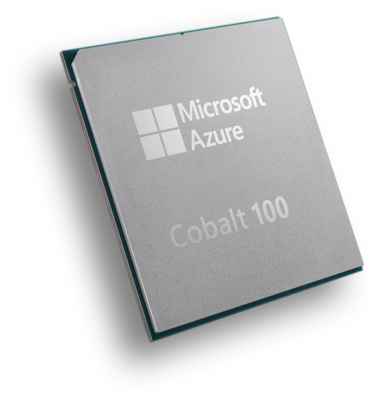At its 2024 Microsoft Build Event this week, Microsoft announced the preview of new Azure Virtual Machines powered by Microsoft’s previously announced in-house-design Arm-based processor, the Cobalt 100 (we previously covered the details of the Cobalt 100). The Cobalt 100 processor, based on Arm’s Neoverse N-series (N2) Arm CPU design, is optimized for performance in scale-out cloud applications. The preview includes general-purpose (Dpsv6-series and Dplsv6-series) and memory-optimized (Epsv6-series) VM series.
Arm-based processors have become increasingly prominent in public cloud environments, driven by their efficiency, performance, and scalability. AWS, Google Cloud, and now, Microsoft Azure, all have their own ARM-based processors.
Arm processors are known for their cost-effectiveness. They offer lower TCO for cloud workloads, translating to reduced operational costs, making them an attractive option for enterprises looking to optimize their cloud spending. For the CSP, building their own processor offers control of the supply chain while also driving cost reductions – the profit that would otherwise flow to Intel or AMD stays in-house, with some of that margin flowing back to the chip-design efforts, while the remainder results in decreased operating costs. It’s a win-win, and Arm makes it relatively easy.
Key Features and Capabilities
Azure Cobalt 100 VMs:
- Dpsv6 and Dpdsv6 VMs: Ideal for scale-out workloads, including those running on Azure Kubernetes Service (AKS), and suited for small to medium open-source databases, application servers, and web servers.
- Dplsv6 and Dpldsv6 VMs: Targeted for media encoding, small databases, gaming servers, and microservices, providing an efficient solution for workloads not requiring higher RAM per vCPU.
- Epsv6 and Epdsv6 VMs: Memory-optimized, designed for large databases, in-memory caching applications, and data analytics, offering higher memory per vCPU.
Performance Enhancements:
- Up to 1.4x CPU performance, 1.5x performance on Java-based workloads, and 2x performance on web servers, .NET applications, and in-memory cache applications compared to previous Azure Arm-based VMs.
- Supports 4x local storage IOPS with NVMe direct and up to 1.5x network bandwidth over previous generations.
Memory Ratios and Flexibility:
- Dpsv6-series: Up to 96 vCPUs with 384 GiBs of RAM (4:1 memory-to-vCPU ratio).
- Dplsv6-series: Up to 96 vCPUs with 192 GiBs of RAM (2:1 memory-to-vCPU ratio).
- Epsv6-series: Up to 96 vCPUs with up to 672 GiBs of RAM (8:1 memory-to-vCPU ratio).
Deployment and Availability
The new VMs can be deployed using Azure portal, SDKs, APIs, PowerShell, and CLI, and are available in multiple Azure regions including Central US, East US, East US 2, North Europe, Southeast Asia, West Europe, and West US 2. During the preview, these VMs are free, with billing applicable for other Azure resources.
Supported OS and Ecosystem
The Azure Cobalt 100 VMs support various Linux distributions, including Ubuntu, CentOS, Debian, Red Hat Enterprise, SUSE Enterprise, Alma, and Azure Linux. For Windows developers, Windows 11 Pro and Enterprise Insider Preview are available. The VMs also support a rich ecosystem of applications and libraries optimized for Arm64.
Developer Tools and Platforms
Microsoft continues to optimize developer platforms and languages for Arm, including .NET 8 and C++ optimizations in Visual Studio 17.8. The Microsoft Build of OpenJDK has been certified for Arm, and GitHub Actions now supports Arm in both self-hosted and GitHub-hosted runners. Docker is ensuring Docker Desktop runs natively on Windows on Arm.
Analysis
ARM-based processors are playing a significant role in transforming public cloud environments, offering cost-effective, energy-efficient, and high-performance computing options. As CSPs like Microsoft Azure continue to integrate and optimize Arm architectures, customers benefit from enhanced flexibility, reduced costs, and the ability to build and scale innovative applications.
The new instances give Azure customers more choice, allowing them to select the best architecture for their specific needs. This flexibility supports diverse application requirements and enables optimized workload placement. It’s a nice move for Microsoft.




